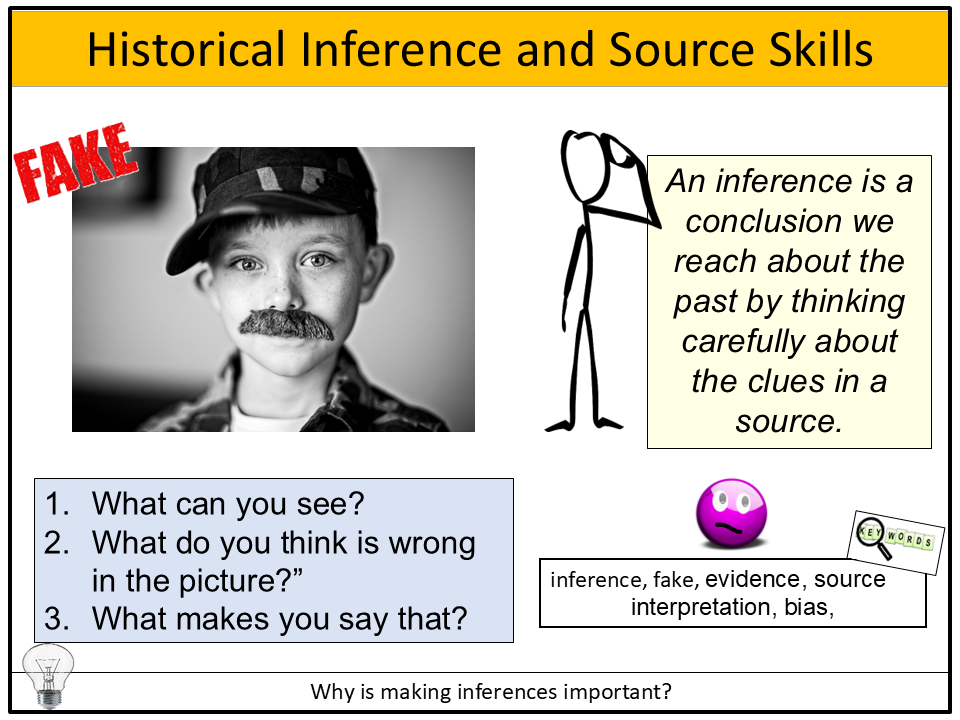


The aim of this lesson is to for students to understand how to make historical inferences from sources and why it is important to do so.
This lessons also helps students think critically about bias, purpose and perspective in historical sources. It also teaches them that official messages often differ from reality and that both types of sources are essential for a full understanding of the past.
Students begin by writing down their thoughts on inference, which many have learnt from primary school.
They are given a number of picture sources to make inferences from and are asked to explain why these inferences have been made.
The lesson also uses written evidence to evaluate as well using Samuel Pepys diary on the Great Fire of London.
Finally, students are required to make inferences on two different sources on the same topic . In this case I have used the role of ARP (Air Raid Patrol) wardens in World War II. They have to decide what inferences can be made from a poster and a diary entry and explain why they are so different as well as understanding and analysing the importance of delivering these different perspectives.
As there is a lot of information to examine throughout the lesson, answers and help are given throughout if needed.
This lesson will encourage debate and discussion by connecting the past to the present. It will also teach students how historians think and work, which is vital for taking their studies forward to GCSE History.
The plenary checks their understanding of inference and allows them to make conclusions about the past
The resource is differentiated and gives suggested teaching strategies. It comes in PowerPoint format which can be edited and changed to suit.
Something went wrong, please try again later.
This resource hasn't been reviewed yet
To ensure quality for our reviews, only customers who have purchased this resource can review it
to let us know if it violates our terms and conditions.
Our customer service team will review your report and will be in touch.